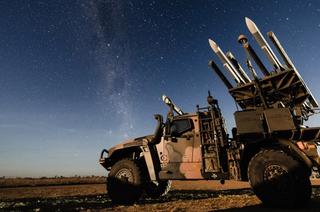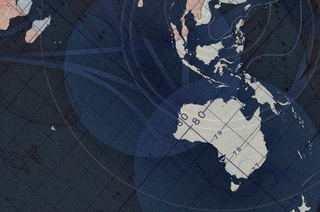Did the US make the right move bombing Iran’s remaining nuclear weapons facilities?
I sat through intense debates about military options in the Situation Room of the White House during the George W. Bush administration.
Some will look at that period and argue that the US and Israel overstated the threat of weapons of mass destruction in Iraq. But I draw a different lesson.
My focus as a senior official at the time was on the North Korean threat.
And looking at that example helps make the case that the strike on Iran’s nuclear facilities was justifiable.
In debating how to stop North Korea’s nuclear weapons programs we also looked at military options, and then quickly took them off the table.
At that point Pyongyang already had an extensive arsenal of chemical and biological weapons to rain down on Japan and Korea, with over 10,000 artillery tubes and missile launchers pointed at Seoul from the DMZ (about as close to Sydney’s CBD as Wollongong).
Enhancing deterrence and containment, while testing diplomacy, was the only realistic option.
We chose to engage Pyongyang through the Six-Party Talks in Beijing and direct bilateral talks in Pyongyang. It did not work.
In retrospect, we underestimated the determination and ability of the North Korean regime to arm itself with nuclear weapons and over-estimated the prospects for diplomacy with a determined, defiant and technologically competent regime.
A nuclear-armed Iran would arguably be far more dangerous than a nuclear-armed North Korea.
North Korea’s nuclear weapons would pose a major threat to Japan, Korea and the US in a contingency, but Pyongyang never had hegemonic ambitions over northeast Asia or any realistic chance of absorbing South Korea.
In contrast, the Iranian regime’s very existence is predicated on the elimination of Israel and the killing of Jews, and Tehran seeks regime change and hegemonic control across the entire Gulf with a death grip over energy supplies to the democratic world.
While North Korea has supported criminal activities and even assassinations abroad, it has nothing like the proxy forces Iran has used for attacks on Israel and US targets in the Middle East.
Imagine a nuclear-armed Iran supporting the kind of attacks Hamas conducted on October 7 and one can immediately understand why Israel, the US and Australia simply cannot allow Iran to have nuclear weapons.
Setting back Iran’s nuclear program for what will likely be many years is a net positive for the international community.
In the case of North Korea, we were resigned to fruitless negotiations as Pyongyang built its nuclear weapons capability. There is debate about how close Iran is to its own nuclear weapons capability, but the trajectory is depressingly similar. The difference is there are more options with Iran.
Israel had neutered Iran’s air defences and proxy fighters, and degraded its nuclear and missile infrastructure.
All that remained was for the US Air Force to use the bunker-busting Massive Ordnance Penetrator bomb to destroy the untouched uranium enrichment facilities at Fordow and to finish off the remnants of the Natanz and Isfahan sites.
Negotiations were going nowhere on actual elimination of the nuclear weapons threat. President Donald Trump decided it was worth taking on the risk to finish the job.
Setting back Iran’s nuclear program for what will likely be many years is a net positive for the international community. Now we will learn whether the risks were calculated correctly.
The risk of broader war in the Middle East has probably been overstated. Iran is running low on missiles and Israel is running low on missile interceptors. Israel is in no position to exploit Iranian weakness on the ground in pursuit of regime change in Tehran – nor is regime change Trump’s objective, as he has made clear since the bombing.
Iran would normally turn to Hamas or Hezbollah for retaliation on the ground against Israel, but that quiver is also empty. Broader geopolitical dynamics will also constrain the principal actors.
The Gulf states will be pleased to see Iran defanged and eager to move to a broader ceasefire. And while Russia and China would have liked to see the US mission in Iran fail, they have their own interests in preventing a broader regional conflagration.
The risk of targeted Iranian retaliation is more serious. I had an Australian colleague at the embassy in Washington who used to invite me for lunch at the same corner table of the Georgetown restaurant where Iranian agents had planned to blow up the Saudi ambassador to the US.
Similar assassination threats were discovered against senior US officials after Quds Force commander Qassem Soleimani was taken out by US drones in Iraq before he could execute an attack on the US embassy in Baghdad. Perhaps by warning that the US could easily take out Ayatollah Ali Khameini, Trump will deter Tehran from retaliation against Americans, but one can also imagine the enormous pressure on the regime for revenge. Exchanging target attacks would not be new with Iran but in its current weakened state Tehran would get the worst of it. They might be deterred.
There are political risks as well. Trump’s MAGA coalition is divided on the bombing, though most Republicans in congress will support him, and the isolationist wing of MAGA remains a minority group with little political influence absent Trump.
US-Israel relations are also on the line since escalation or Iranian retaliation could sour the US public on Benjamin Netanyahu, who began this military campaign. But Trump has probably calculated rightly that the public will rally around the flag and blame Iran rather than Israel for what comes next … if it is limited.
With success these risks will be forgotten. With failure there will be damaging political questions about whether Trump acted to prove wrong the “TACO” (Trump Always Chickens Out) nickname or perhaps to get the attack out of the way to focus on passing his stalled budget bill in Congress.
The Trump national security decision-making process has also been chaotic and unpredictable, with large parts of his own National Security Council staff dismissed and delays in appointing key people across the Pentagon and State Department.
But with success the talk will be of Trump’s decisiveness rather than any failures in process.
The risks to the US in Asia would also have come up in Trump’s internal deliberations.
Ultimately... we would not be able to contain a nuclear-armed Iran the way we have a nuclear-armed North Korea.
Some officials would’ve been concerned a broader conflict would distract attention and resources from competition with China in the Indo-Pacific, while others would argue setting the Iranian threat back years will build more time to deal with China. They would add that the use of force against Iran would send a signal of resolve that might cause pause for China and North Korea in Asia.
Trump ran on being both anti-war and bold on the world stage. This time he chose being bold. We will see whether his assumptions about risk were right.
They probably are, but using military force rarely results in predictable outcomes. That is what Clausewitz meant when he wrote of the fog of war. Ultimately, however, we would not be able to contain a nuclear-armed Iran the way we have a nuclear-armed North Korea. The risk-benefit analysis therefore leans in favour of this strike.






